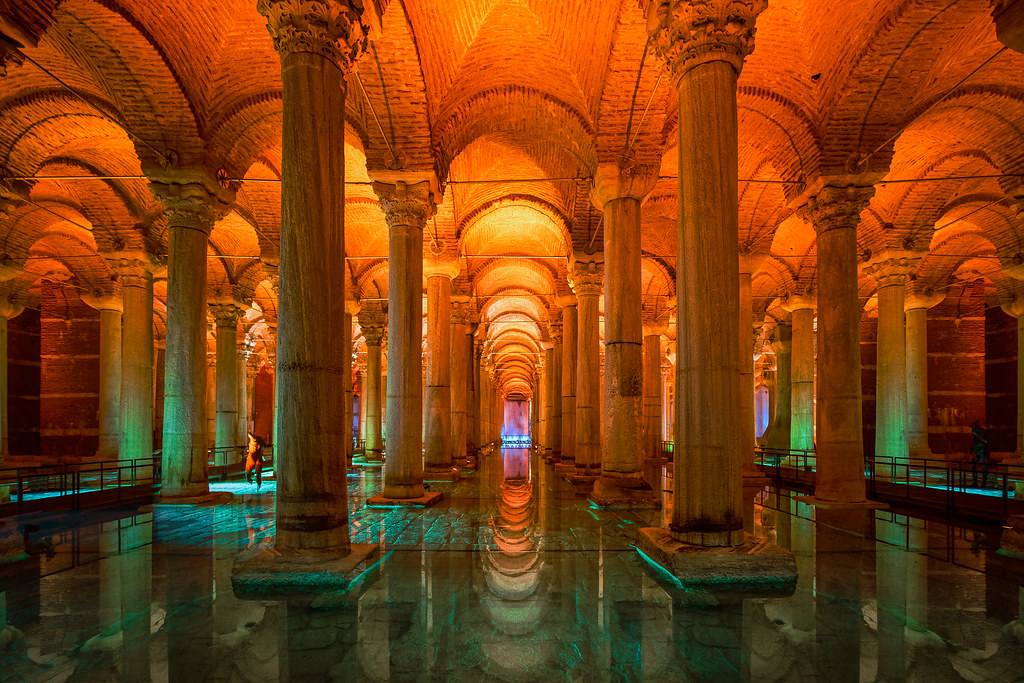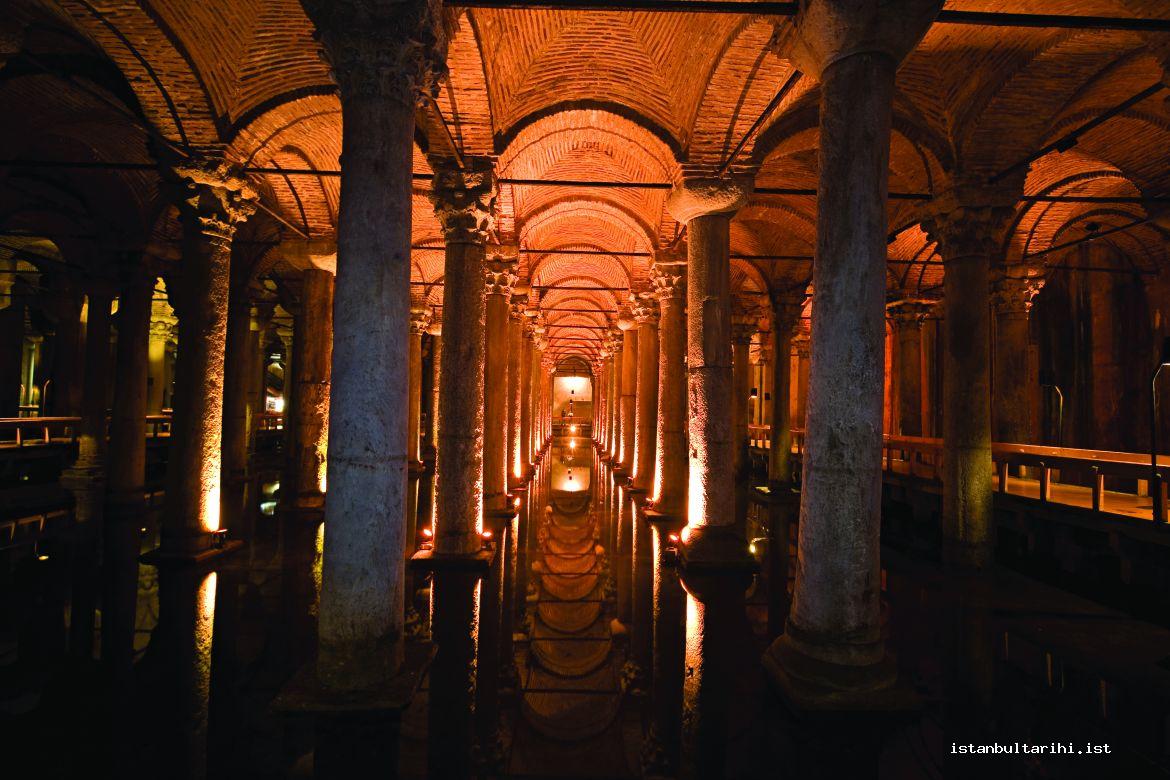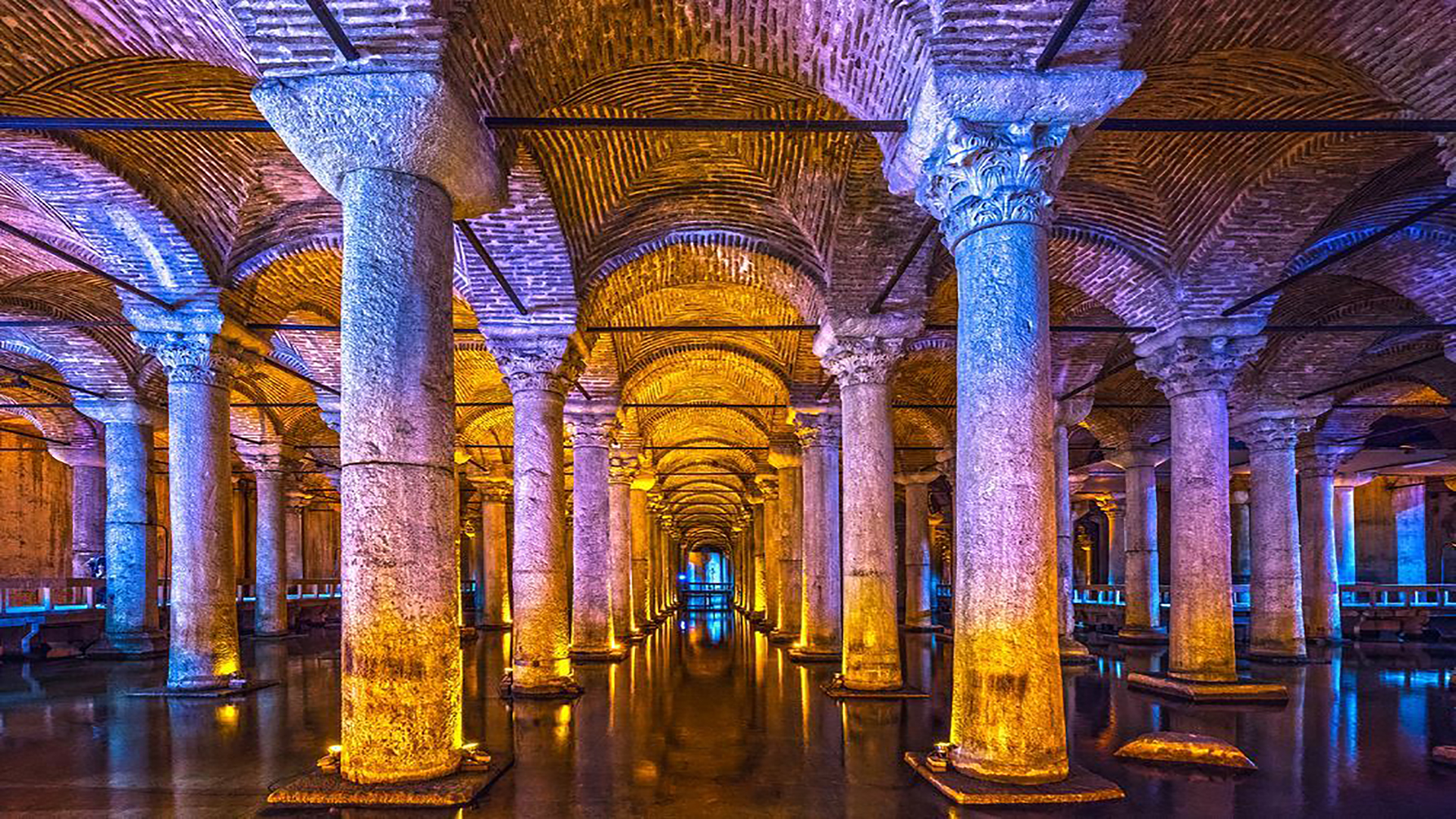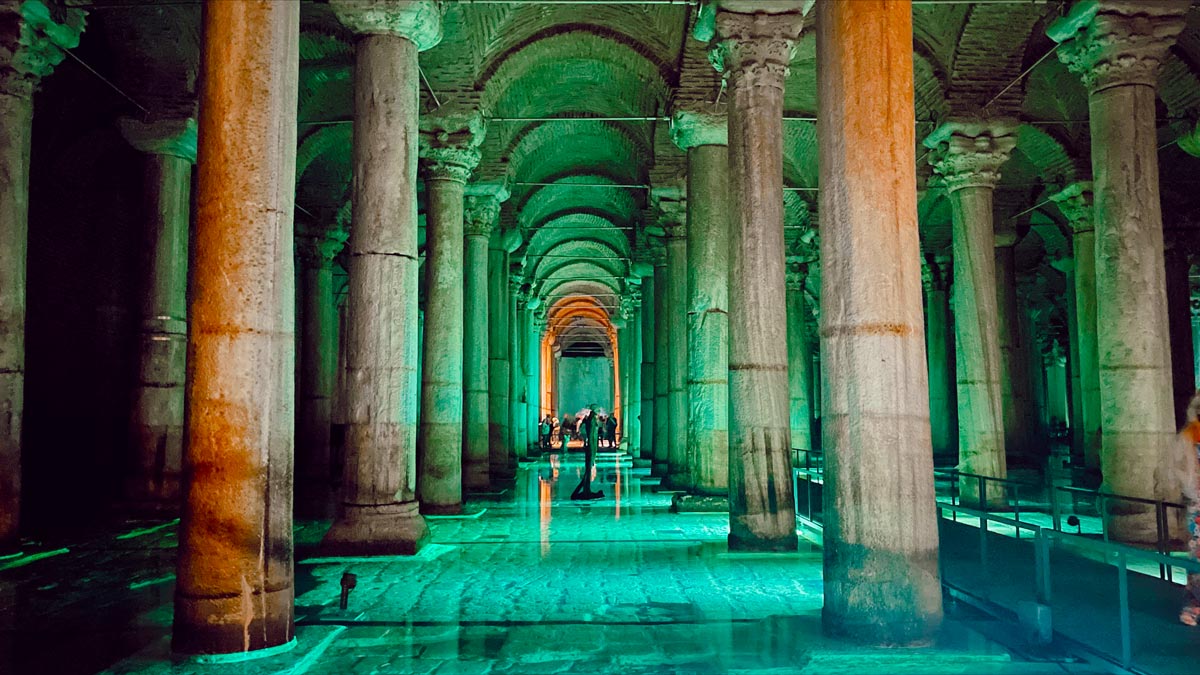Constantinople, the capital of the Byzantine Empire, was a city of immense historical and cultural significance. However, it also faced considerable challenges in maintaining a reliable water supply. With a rapidly growing population and frequent sieges, ensuring access to water became a critical issue for the city’s survival. To address these challenges, the Byzantine Empire undertook an impressive engineering feat: constructing a vast network of underground cisterns. These cisterns allowed the city to store and protect vast quantities of water, ensuring that the population could survive even in times of siege when external water sources were cut off.
The Strategic Importance of Cisterns in Constantinople
Constantinople’s geographical location made it both a cultural and strategic hub, but also vulnerable to attacks. The city’s water supply was often threatened during military conflicts, and sieges could easily cut off access to external sources of water, such as the Bosporus or nearby springs. The construction of cisterns was thus a practical solution to this problem, allowing the city to store large quantities of water underground and ensure its availability when needed most. These cisterns were not merely functional; they were also an impressive testament to Byzantine engineering, demonstrating the foresight and ingenuity of the empire’s planners.

As Constantinople expanded in size and complexity, the need for water management became more pressing. Cisterns played a central role in the daily life of the city, particularly in sustaining its population during times of war or siege. By storing water for times of scarcity, the cisterns helped the empire endure through some of the most trying periods in its history.
The Basilica Cistern: The Grand Reservoir
One of the most famous and largest cisterns in Constantinople is the Basilica Cistern (Yerebatan Sarayı), which remains an enduring symbol of Byzantine engineering. Completed during the reign of Emperor Justinian I in the 6th century, this monumental cistern covers an area of approximately 9,800 square meters and can hold up to 80,000 cubic meters of water. Located near the Hagia Sophia, it was designed to supply water to the nearby Great Palace of Constantinople.

The Basilica Cistern is supported by 336 marble columns, many of which were repurposed from older Roman structures. The columns create an awe-inspiring underground chamber, whose vastness and architectural elegance still captivate visitors today. Among its most famous features are the Medusa head columns, adding an air of mystery and intrigue to the already atmospheric setting. Over the years, the Basilica Cistern has become a major tourist attraction, drawing thousands to explore its serene waters and marvel at the ingenuity of Byzantine engineers.
The Cistern of Philoxenos: An Engineering Marvel
Another remarkable cistern is the Cistern of Philoxenos, also known as the Binbirdirek Cistern, meaning “Thousand and One Columns.” Located near the Hippodrome, this cistern is smaller than the Basilica Cistern but still an extraordinary achievement of Byzantine engineering. Believed to have been built in the 5th century, it features 224 columns that support its vaulted ceiling. The cistern’s unique name reflects the abundance of columns, creating a visually stunning environment. The Cistern of Philoxenos has remained relatively unchanged over the centuries, retaining much of its original structure and giving visitors a rare glimpse into the city’s past.

Despite its importance, the Cistern of Philoxenos is less well-known than the Basilica Cistern, making it a hidden gem for those exploring Constantinople’s underground marvels. Its relatively unaltered state allows for a deeper appreciation of the scale and complexity of Byzantine water management.
The Theodosius Cistern: A Testament to Imperial Power
The Theodosius Cistern, built during the reign of Emperor Theodosius II in the 5th century, is another key water reservoir in the city. Located near the Marmara Sea, it was primarily used to supply water to the Great Palace of Constantinople and its surrounding imperial structures. Though not as large as the Basilica Cistern, the Theodosius Cistern still played a crucial role in the daily life of the empire, supporting the needs of the royal palace and its important administrative buildings.

While it is less famous than the other cisterns, the Theodosius Cistern holds great historical significance. It underscores the strategic importance of water management in the governance of Constantinople, serving not only as a vital water source but also as a symbol of the imperial power and sophistication of the Byzantine Empire.
The Legacy of Constantinople’s Cisterns
The construction of the cisterns in Constantinople was a remarkable achievement in civil engineering. These subterranean reservoirs were essential in ensuring the survival of the city through periods of siege and water scarcity. The cisterns also highlighted the sophistication of Byzantine architectural and engineering practices, blending functionality with grandeur.
Today, many of these cisterns remain intact, continuing to serve as important historical landmarks and tourist attractions. The legacy of these underground water reservoirs endures, offering modern-day visitors a glimpse into the ingenuity and resourcefulness of the Byzantine Empire. Whether hidden beneath the streets of Istanbul or open to visitors, the cisterns stand as silent witnesses to the city’s rich cultural and architectural heritage.
The cisterns of Constantinople are not just monuments to the past; they are living reminders of the city’s resilience and the foresight of its rulers. They allowed the Byzantine Empire to thrive in an often-hostile environment, playing a pivotal role in the empire’s success and survival. Today, they continue to fascinate historians, archaeologists, and visitors alike, offering a connection to one of the most powerful empires in history.

